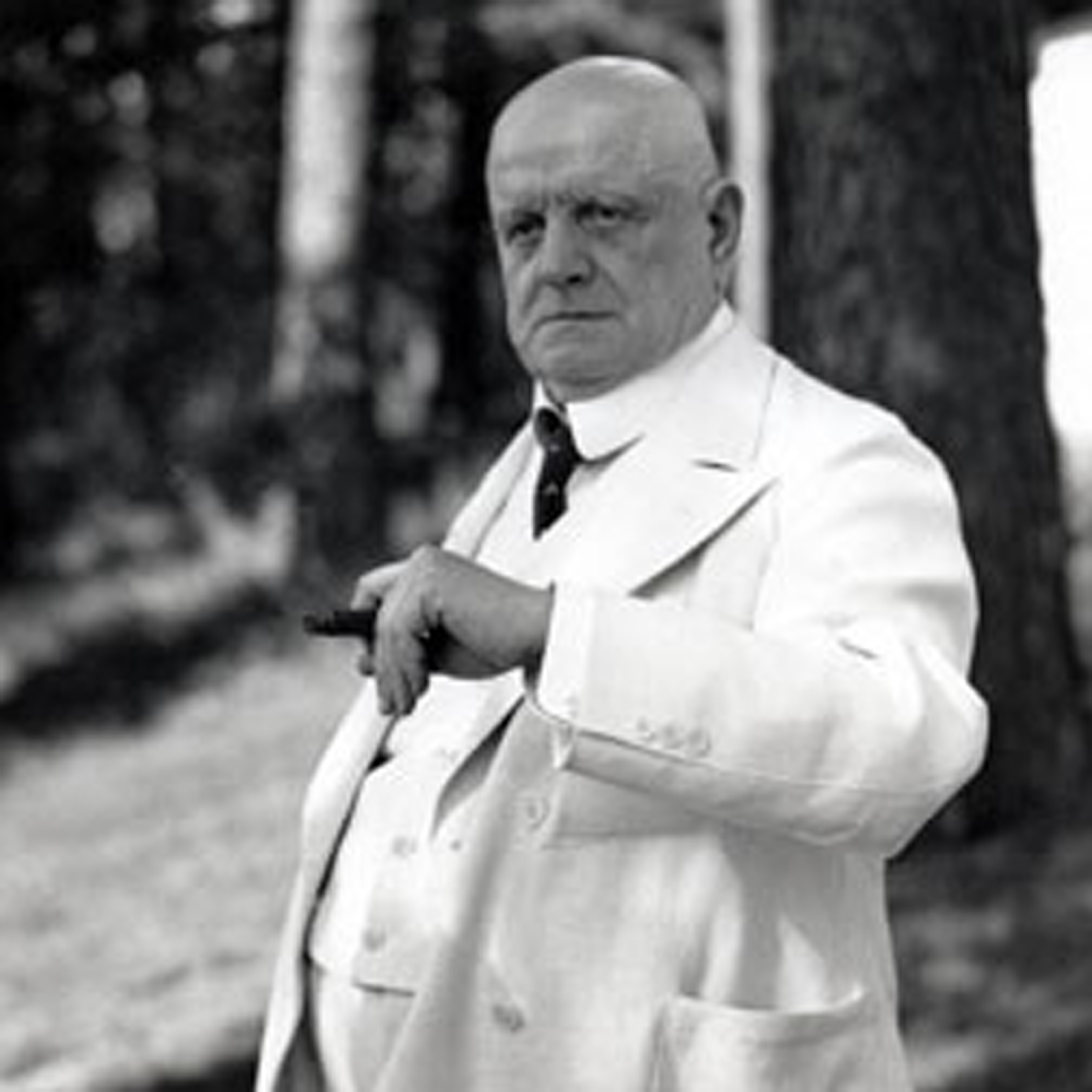
Sibelius
Born: 1865
Died: 1957
Jean Sibelius
To most people Sibelius is the composer of Finlandia and the Karelia Suite; to others he is one of the great symphony composers; to the people of Finland he is these things and a national hero.
Explore Sibelius's life and music...
Top 10 Sibelius recordings
A beginner's guide to 10 of the most outstanding recordings of Jean Sibelius's music... Read the article
Karajan's Sibelius
Conductor Herbert von Karajan speaks to Gramophone's Robert Layton about his passion for Sibelius's music... Read more
Obituary: Jean Sibelius (Dec 8, 1865 - Sept 20, 1957)
The original Gramophone obituary from December 1957, by Harold Rutland... Read more
Sibelius Revisited
How does Lahti's new chief follow Vänskä's iconic interpretations? With something very different, reports Andrew Mellor... Read more
Playlist: Great Sibelius Recordings
To most people Sibelius is the composer of Finlandia and the Karelia Suite; to others he is one of the great symphony composers; to the people of Finland he is these things and a national hero. While he was still alive the Finnish government issued stamps with his portrait and would have erected a statue to him as well had not Sibelius himself discouraged the project. Probably no composer in history has meant so much to his native country as did Sibelius. He still does. ‘He is Finland in music; and he is Finnish music,’ observed one critic.
Sibelius was born in a small town in south central Finland, the son of a regimental doctor who died during the cholera epidemic of 1867-68, and was brought up by his mother and grandmother. (He adopted the name Jean after coming across a set of visiting cards used by his sea-faring uncle who had gallicised his name from Johan to Jean.)
The usual early music lessons (piano and violin were his chosen instruments) led to his first composition effort aged 10, followed by a series of juvenilia, influenced by the likes of Mozart and Grieg. The law drew him briefly at Helsinki University but music quickly took over. Busoni was on the staff of the Music Academy and a lifelong friendship developed between the two. In 1889 Sibelius went off to Berlin for further study, then to Vienna as a pupil of Karl Goldmark. On his return to Finland in 1891 he produced his first major composition, the Kullervo Symphony, based on an episode from the great Finnish epic poem Kalevala. Overnight, this ambitious score established him as the country’s most important composer.
Finnish mythology had a profound effect on him and he formed the ideal of creating music that resonated with these ancient legends and so reflected the spirit and unique culture of his people and country. Works such as En saga, The Swan of Tuonela and his First Symphony had a tremendous impact. Above all, it was Finlandia, an overtly patriotic orchestral work, that identified him with the growing nationalist movement.
A grant from the enlightened Finnish Senate enabled him to give up all other work so that he could concentrate entirely on composing. This was not enough to keep him out of debt and he and his wife (Aino Järnefelt, whom he’d married in 1892) were beset with money worries all through the 1890s to the end of the First World War. Ironically, he sold one of his most popular compositions, the little salon Valse triste, to his publishers for 300 marks – it made them a fortune. He was also a heavy drinker with a fondness for beer and cognac as well as fine cigars, none of which helped his problems. In 1901 a disease of the ear threatened to make him totally deaf – it was successfully treated – but seven years later he had to undergo 13 throat operations to remove a malignant growth, at first diagnosed as cancer. His music during this period (including the Valse triste and the melancholy Fourth Symphony) reflected his morbid frame of mind at the time.
By the outbreak of the First World War, honours were being heaped upon him as he travelled all over Europe and even to America to conduct his music. The war not only cut off his foreign visits and royalties but heralded the complete stop to all creative activity. Apart from some trivial piano music, only the Fifth Symphony was composed during the conflict, completed in time for his 50th birthday celebrations. Finland proclaimed its independence after the October Revolution and was plunged into a civil war after a coup d’état by the Red Guards. Sibelius’s brother was murdered and he himself was forced to flee the Villa Ainola, which since 1904 had been his home in Järvenpää, to the north of Helsinki.
After the war he composed his Sixth and Seventh Symphonies, the symphonic poem Tapiola and the incidental music to a production of The Tempest. He travelled, he toured, he conducted, but his last known work was completed in 1929. After that, all was silence. Rossini amused himself in his old age by writing little jeux d’esprits; for the last 31 years of his life Sibelius didn’t put pen to paper. He was 91 when he died of a cerebral haemorrhage.

Gramophone Digital Club
- Digital Edition
- Digital Archive
- Reviews Database
- Full website access
From £8.75 / month
Subscribe
Gramophone Full Club
- Print Edition
- Digital Edition
- Digital Archive
- Reviews Database
- Full website access
From £11.00 / month
Subscribe
If you are a library, university or other organisation that would be interested in an institutional subscription to Gramophone please click here for further information.





